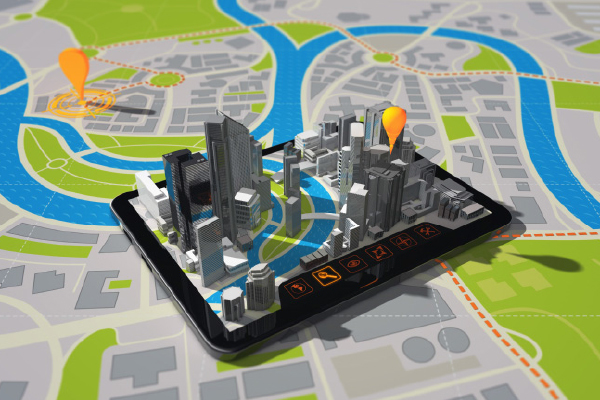 In major metropolitan areas and smaller cities alike, governments are adopting software-defined networking (SDN) and network function virtualisation (NFV) to deliver the agility and flexibility needed to support adoption of ‘smart’ technologies that enhance the liveability, workability and sustainability of their locale.
In major metropolitan areas and smaller cities alike, governments are adopting software-defined networking (SDN) and network function virtualisation (NFV) to deliver the agility and flexibility needed to support adoption of ‘smart’ technologies that enhance the liveability, workability and sustainability of their locale.
Today, there are billions of devices and sensors being deployed that can automatically collect data on everything from traffic to weather, to energy usage, water consumption, carbon dioxide levels and more. Once collected, the data has to be aggregated and transported to stakeholders where it is stored, organised and analysed.
These latest advancements bring a seemingly endless list of potential benefits. Transportation departments can make informed decisions to alleviate traffic jams. Sources of water leaks can be pinpointed and proactive repairs scheduled. Smart payments can be made across city agencies, allowing citizens to complete official payments quickly and reducing government employee time to facilitate such transactions and so on.
Of particular interest is how healthcare services can be improved. There is already a push to adopt more efficient and effective digital technology management systems to better store, secure and retrieve huge amounts of patient data. Going a step further, a Smart City is better equipped to support telemedicine innovations that require the highest quality, uninterrupted network service.
The Smart City of today
While the Smart City is expected to become the norm, examples exist today. Barcelona is recognised for environmental initiatives – such as electric vehicles and bus networks – city-wide free Wi-Fi, smart parking, and many more programs, all of which benefit from Smart City initiatives. With a population of 1.6 million citizens, Barcelona shows that Smart City technologies can be implemented regardless of city size.
How do cities become smart? The most immediate need is to converge disparate communications networks run by agencies to ensure seamless connectivity. To achieve this, packet optical based connectivity is proving critical, thanks largely to the flexibility and cost advantages it provides. Then atop the packet optical foundation sits technology that enables NFV and the applications running on commercial off-the-shelf equipment in some form of virtualised environment. SDN and NFV allow for the quick and virtual deployment of services to support multiple data traffic and priority types, as well as increasingly unpredictable data flows of IoT.
Decoupling network functions from the hardware means that architectures can be easily adjusted as IoT requirements change. Also, SDN and NFV can yield a more agile service provision process by dynamically defining the network that connects IoT end-devices to back-end data centres or cloud services.
The dynamic nature of monitoring endpoints, location and scale will require SDN so that networks can be programmable and reconfigured to accommodate moving workloads. For example, allocating bandwidth to a stadium for better streaming performance of an event as the number of users watching remotely on-demand goes up – this sort of dynamic network-on-demand capability is enabled by SDN. Additionally, NFV can play a key role where many of the monitoring points that make the city ‘Smart’ are actually not purpose-built hardware-centric solutions, but rather software-based solutions that can be running on-demand.
With virtual network functions, the network can react in a more agile manner as the municipality requires. This is particularly important because the network underlying the Smart City must be able to extract high levels of contextual insight through real-time analytics conducted on extremely large datasets if systems are to be able to problem-solve in real-time.
SDN and NFV may enable the load balancing, service chaining and bandwidth calendaring needed to manage networks that are unprecedented in scale. In addition, they can ensure network-level data security and protection against intrusions – which is critical given the near-impossible task of securing the numerous sensor and device endpoints in smart city environments.
Smart City business models
In their Smart City initiatives, cities large and small are facing issues regarding planning, infrastructure, systems operations, citizen engagement, data sharing, and more.
The scale might vary, but all are trying to converge networks in order to provide better services to citizens in an era of shrinking budgets. As such, the decision on how to make this a reality is important. As defined by analysts in a report by Frost & Sullivan, titled ‘Global Smart City market a $1.5 trillion growth opportunity In 2020,’ there are four major Smart City business models to consider:
Build, Own, Operate (BOO): In a BOO model, municipalities own, control, and independently build the city infrastructure that they need, and deliver the Smart City services themselves. Both the operation and maintenance of these services is under the municipality’s private control, often headed up by their city planner.
Build, Operate, Transfer (BOT): Whereas in a BOO model, the municipality is always in charge of the operation and management of Smart City services, in a BOT model that is only the case after a little while – the Smart City infrastructure building and initial service operation is first handled by a trusted partner appointed by the city planner. Then, once all is built and in motion, operations are handed back over to the city.
Open Business Model (OBM): In an OBM model, the city planner is open to any qualified company building city infrastructure and providing Smart City services, so long as they stay within set guidelines and regulations.
Build, Operate, Manage (BOM): Finally, there is the BOM model, which is where the majority of Smart City projects are likely to be categorised. In this model, the Smart City planner appoints a trusted partner to develop the city infrastructure and services. The city planner then has no further role beyond appointment – the partner is in charge of operating and managing Smart City services.
SDN and NFV: The keys to the (Smart) city
With the appropriate business model in place and the network foundation laid out, the technology needs to be implemented to enable virtualisation. Virtualised applications allow for the flexibility of numerous data types, and the scalability to transport huge amounts of data the city aims to use in its analysis.
SDN and NFV can reduce the hardware, power, and space requirements to deploy network functions through the use of industry-standard high-volume servers, switches and storage. They both enable network applications to be portable and upgradeable with software; and grant cities of all sizes the agility and scalability to tackle the needs and trends of the future as they arise. Like the brain’s neural pathways throughout a body, SDN and NFV are essential in making the Smart City and its networks connect and talk to each other in a meaningful way.





